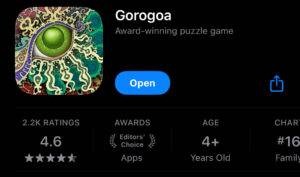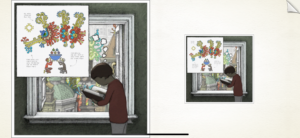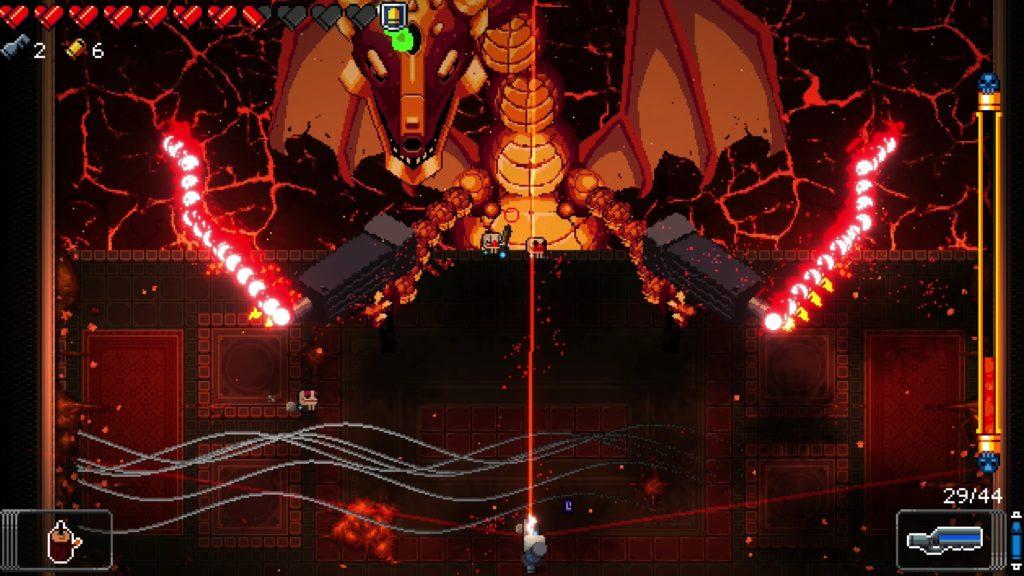
For this week’s Critical Play, I playtested Gorogoa. I played the game on iOS, but it is also available on Steam, Nintendo Switch, PlayStation, Xbox, and nearly all major platforms. The game was released in December 2017 and was developed by Jason Roberts and published by Annapurna Interactive. I chose the iOS version because the $4.99 price point was significantly cheaper than the $14.99 I saw on Steam (so I felt like I had a deal even though there must have also been free games on the list). According to the App Store, the game is rated for ages 4+ but I would argue that it is probably better suited for players 12+ because the puzzles are complex and the abstract narrative is difficult for younger children to grasp because they do not have enough previous life experience to foresee what will happen or put the puzzle together. Compared to the typical 4+ games like Angry Birds or Fruit Ninja, this requires a lot more brain development to understand and enjoy. Overall, the game involves manipulating a grid of four panels containing hand-drawn illustrations that can be arranged, stacked, and zoomed in/out to progress through an abstract, spiritual journey. It is a masterful artistic puzzle game that has gained recognition by the App Store, BAFTA, and over 18k super positive reviews on Steam.

Mechanics

The intricate puzzle mechanics of Gorogoa create a unique gameplay experience that seamlessly blends navigation and problem-solving. From my first play, I remember thinking, “Wow, this has never been done before,” and I still think so after playing 6 levels. The game has limited but powerful mechanics: you can only manipulate within four panels by zooming in and out, separating layers, and rearranging them to create new connections. Although the game doesn’t involve explicit walking or exploration in the traditional sense, the mechanics enable a dynamic of visual exploration and perspective shifting. And within the frames, you get to explore so many worlds that the game takes you to, some of which you can “choose.” I say “choose” because while it does seem like you have autonomy over what you are doing with the frames, the game only progresses when you choose the specific action that the game wants. Similar to what was discussed in our readings about embedded narratives, these mechanics allow players to gradually uncover the game’s story through spatial investigation rather than explicit storytelling. The puzzle-solving dynamic is central to the experience, as players must discover how different visual elements can interact across panels. For example, placing a doorway from one panel adjacent to a pathway in another creates a new route for the character to traverse, or aligning a light source from one scene with an object in another might activate a mechanism.
One things that makes Gorogoa’s mechanics really effective is that they control and thoroughly reward information revelation. The game restricts how much of the narrative and puzzle solutions at any time by reducing the number of frames used out of 4 and even more intricately reducing the number of micro-scenes we can click into. At some points, it is really not intuitive and there is only one specific action that can unleash the whole next step. In one example, I needed to realize that in order to “call the bird” over, I needed to see that one of the portraits on the walls open up to combine with another frame in order to make a branch for a bird to fly on. I originally had the left frame on the bottom so I didn’t notice this, and it took me a while to see it. But once I put it together (which in this case happened by luck), I felt a rewarding moment of discovery and a cascade of tiny revelations followed, really locking me into the game. I had to take a screenshot from a play through instead of my own version because we cannot go back in Gorogoa.

The architecture of Gorogoa plays a crucial role in shaping the gameplay experience. As “The Role of Architecture in Video Games” article we studied suggests, the game’s visual spaces function as both puzzle components and narrative devices. The hand-drawn illustrations are really masterful and dynamic spaces that the player can click into, and each frame has multiple levels. The logic structure behind the game is incredibly complex because it allows even the game’s limited interface—just four squares—to tell long stories with hidden puzzles within. The economy of design forces players to scrutinize every detail they get (because it is not a lot), and trains good problem solving skills and pattern recognition.
In terms of secondary functions, the architecture also serves as world building. There are recognizable elements like houses, gardens, and city streets that are drawn in a fantastical way to inspire imagery that is humanly impossible, so bridging the real and fantastical worlds together.


The game builds its world through visuals instead of text. The same images—like the star fruit, specific patterns, and the dragon creature—appear throughout different scenes, connecting them together. When you zoom into objects and find whole new scenes inside them, it teaches you to look for deeper meaning in simple things. This way of telling a story makes you figure out the meaning yourself, rather than just being told what everything means. This architectural approach to storytelling makes the player an active participant in constructing meaning, rather than a passive recipient of narrative.
Accessibility
Regarding accessibility, Gorogoa is not the most accessible. On the positive side, the game has minimal text and can be understood regardless of language, which is really amazing. However, the puzzles themselves sometimes require specific knowledge that might not be universally available, and at these stress points, the game does not offer any support. One puzzle I encountered required an understanding of basic physics regarding levers and weight distribution. I found myself stuck for nearly five minutes, unable to progress because I wasn’t thinking about the weight of rocks in the scene as a factor in the puzzle solution. As I wasn’t physically feeling the weight of the objects, it didn’t immediately occur to me that their mass would be relevant to the solution. The only way I was able to solve it and pass the level was because I watched a walk through (only up to that point) that allowed me to see the connection. Most walkthroughs of Gorogoa is in English so if non-English speakers get stuck, they might have a hard time finding resources to get unstuck.


One thing that would really help make sure that everyone can finish the game is if the developers offered hints (maybe just on the side or as a popup) that would show up if a player has spent over 5 minutes on one scene or some other amount of time. Most modern puzzles provides clues if the player is stuck, so that the player can improve with time, but Gorogoa offers no assistance yet. I see how this design choice maintains the purity of the puzzle-solving experience and heightens the satisfaction of discovery, but it also is a barrier for those who just cannot figure it out. And of those people, many might not speak English.



